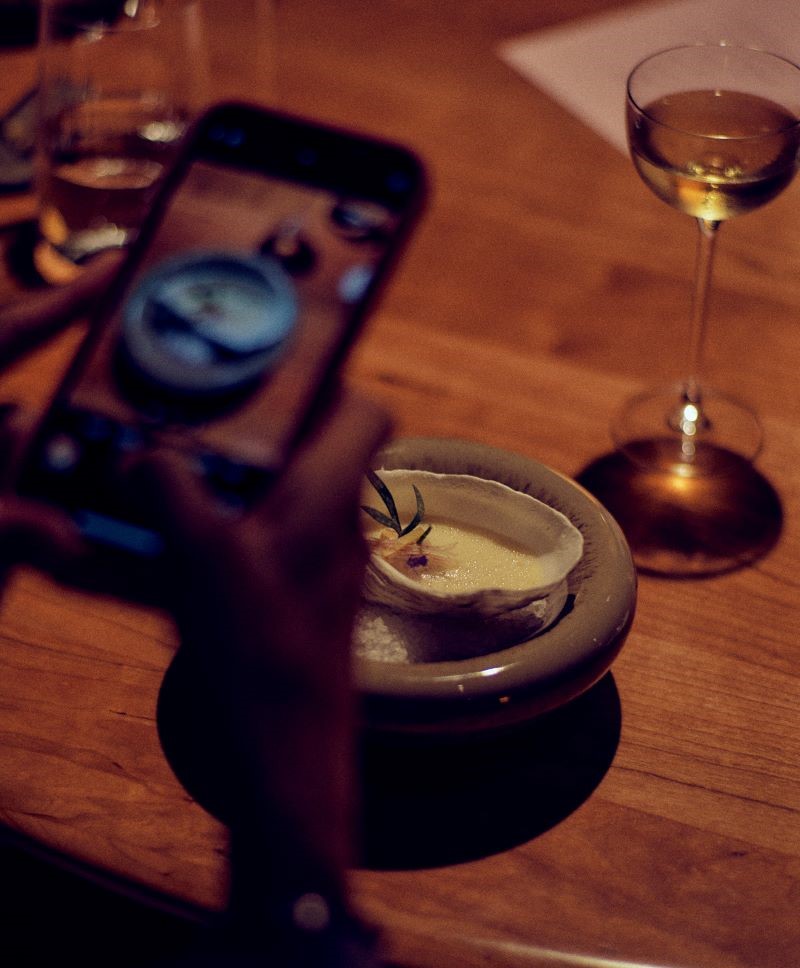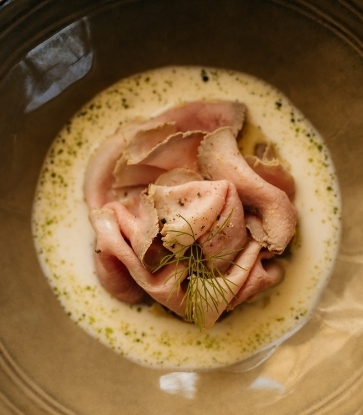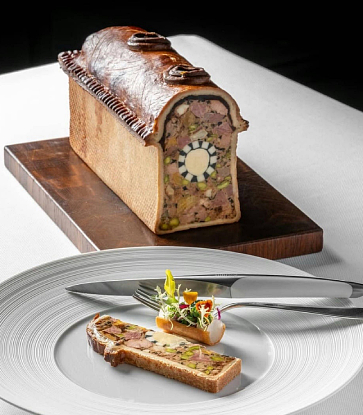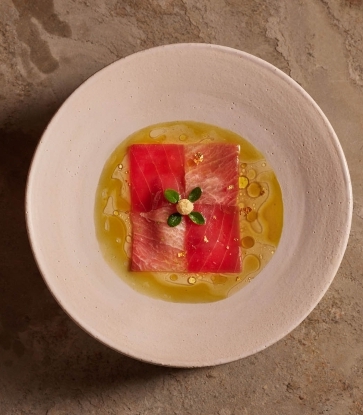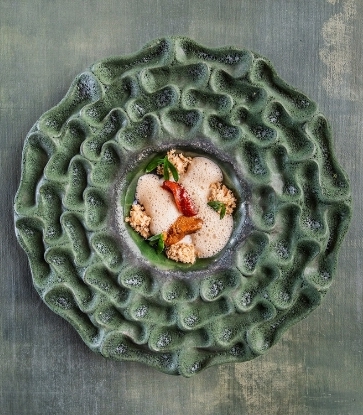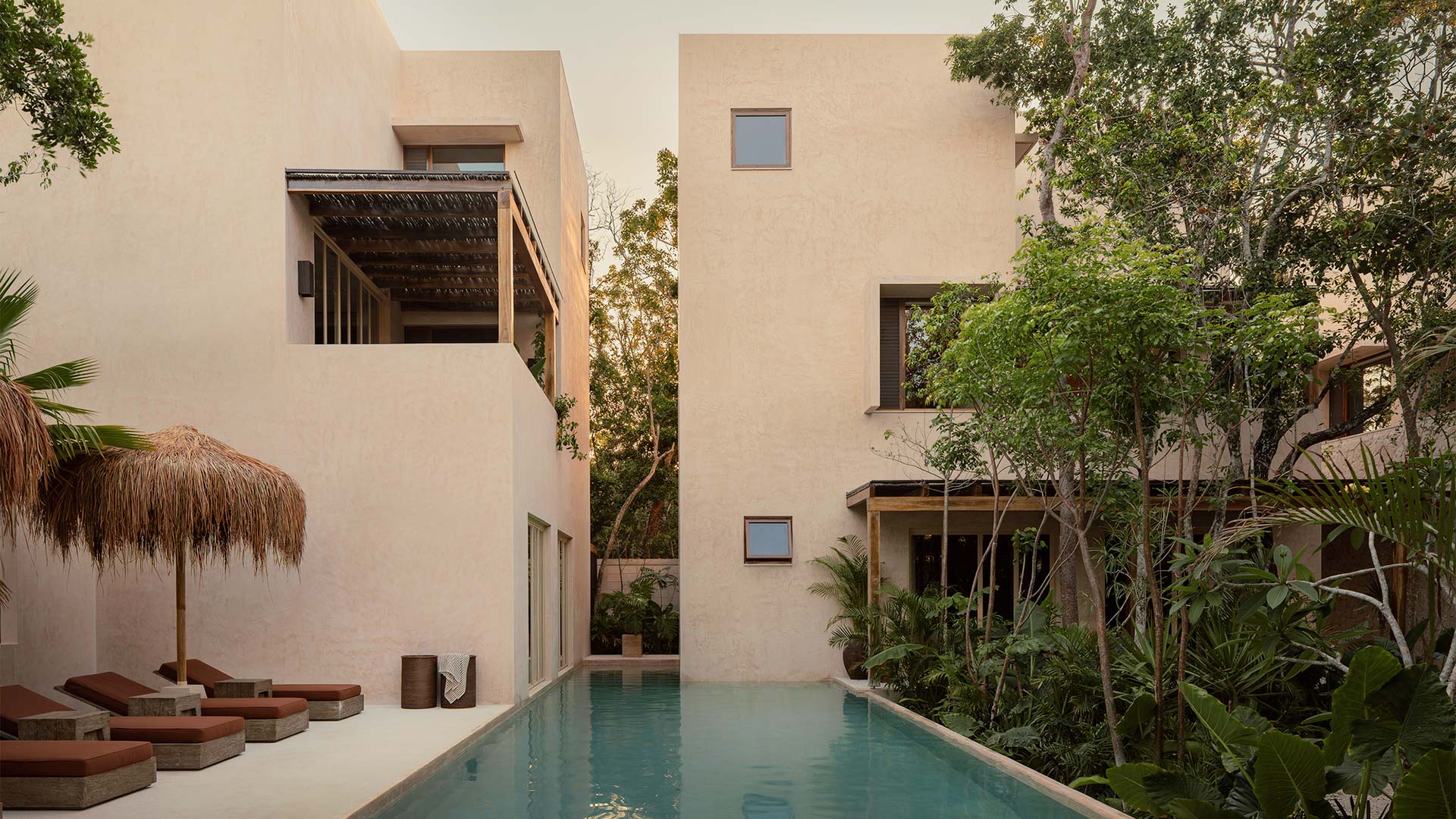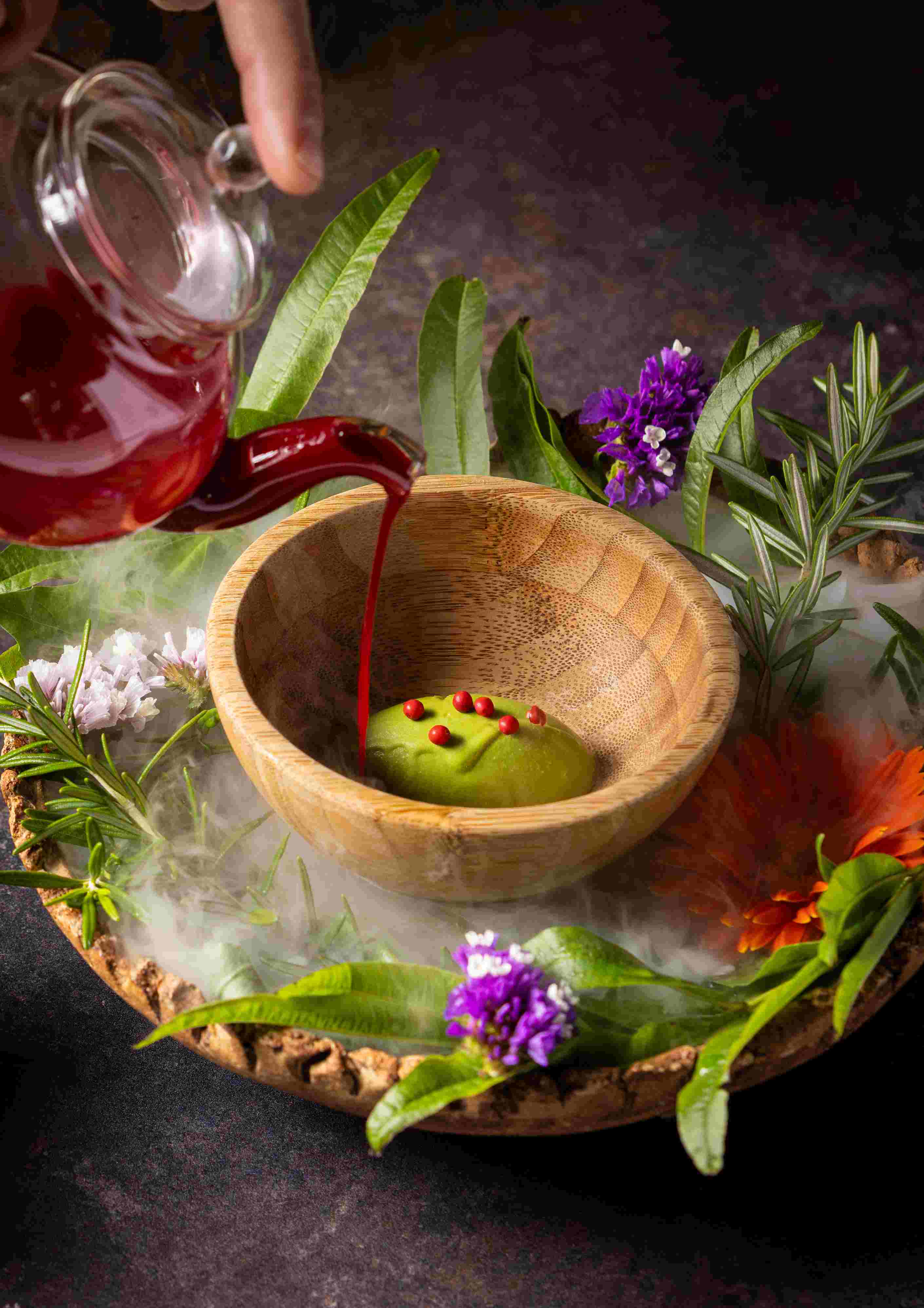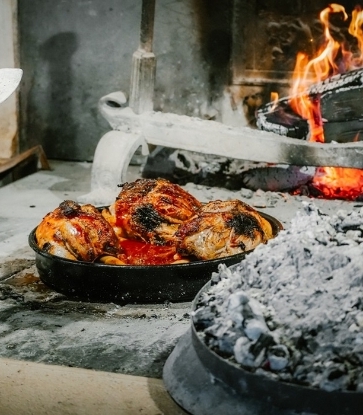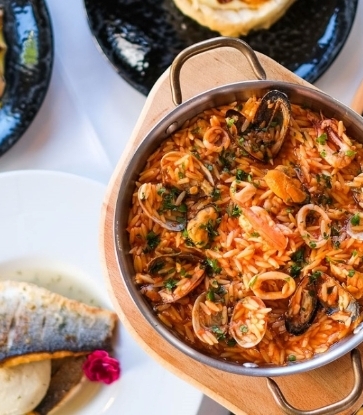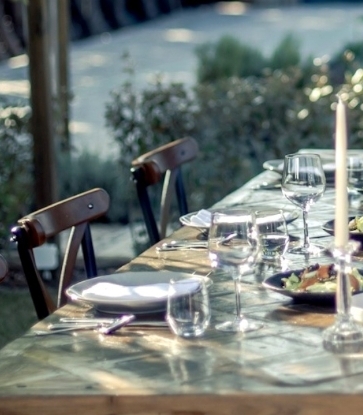In recent years, São Paulo has emerged as a city that deeply values its culinary heritage—and today’s restaurant scene leaves no doubt. It stands among the most dynamic gastronomic cities in Latin America, and arguably, the world. Few places can rival São Paulo’s sheer number and variety of restaurants: over 30,000 establishments offering 81 types of cuisine—16 rooted in Brazilian states and 65 from countries around the globe.
But it’s quality, not quantity, that sets São Paulo apart. Many restaurants stand out for their exceptional service, technical precision, and commitment to high-quality ingredients. The city’s dining scene continues to flourish, earning growing recognition from both locals and international visitors.
It’s no wonder São Paulo proudly holds 17 MICHELIN Stars. It’s also the only Latin American city with three restaurants awarded Two Stars. Read on to plan your culinary adventure in this vibrant metropolis—one best explored through its cuisine.

How to Find Starred Restaurants
Below is the complete list of MICHELIN-Starred restaurants in São Paulo, organized by category and listed alphabetically. Click on each name to view its MICHELIN Guide page for more details.If you'd like to explore all MICHELIN-Starred establishments in Brazil—including those in São Paulo and Rio de Janeiro—you can find the full list here.
Highlights of São Paulo's MICHELIN Scene

A Deep-Rooted Japanese Tradition
São Paulo is a city of superlatives. It's home to the largest Japanese community outside Japan. This immigration, which began at the end of the 19th century, has profoundly shaped the city's cultural landscape—especially its cuisine. It's no coincidence that 10 of the MICHELIN One Stars restaurants in São Paulo are dedicated to Japanese cuisine, each with its own distinct style.
All of these establishments—whether classic or cutting-edge—share a commitment to excellence. From the reverence of traditional spots to the boldness of contemporary ones, São Paulo’s Japanese dining scene reflects both diversity and depth, honoring its roots while imagining what’s next.

A generation of restaurants, including the legendary Jun Sakamoto, the artisanal KANOE, the unpretentious Oizumi Sushi, the classic Kinoshita, and the intimate counter at Ryo Gastronomia, share a unified spirit: reverence for Japanese culture and its long-standing culinary practices. Common to all is the liturgy of one of the world’s most acclaimed culinary traditions, featuring precise cuts, expertly matured fish, original ingredients, and service that respects time and detail. From Ryo’s impeccable lineup of sushi to Kinoshita’s Kappo cuisine, each experience feels like a hushed stage—where diners witness the technique, knowledge, and finesse of chefs in a celebration of simplicity elevated to the sublime.
More contemporary in form yet equally rigorous in substance, restaurants like the sophisticated Kazuo, inventive Murakami, discreet Kan Suke, innovative Kuro, and intimate Huto expand the horizons of Japanese cuisine in the city. They incorporate local products and occasionally reference other Asian cuisines—often showcasing cutting-edge techniques. At Kazuo, the pan-Oriental concept takes diners through India, Thailand, and China; at Kuro, Japanese Binchotan charcoal sets the tone; Kan Suke offers creations such as warm tuna sashimi with tahini; while at Huto, guests enjoy impeccable sushi sequences and creative hot dishes. At Murakami, the balance between affection and precision transforms each dinner into a sensory journey crafted by chef Tsuyoshi Murakami. These establishments engage with the world, yet remain rooted in their ancestral heart.

São Paulo with an Italian Accent
The Italian wave of immigration likewise left profound marks on São Paulo’s culture, influencing the accent, habits, and, naturally, the city’s culinary scene. Case in point: in São Paulo, people eat more pizza than in Naples. But it’s not just about pizza—the city’s culinary DNA is rich with pasta and other flavors brought by Italian immigrants. Fun fact: some of the very first restaurants in São Paulo were opened by them.
Over time, Italian cuisine in São Paulo has become more refined, embracing the creativity of chefs and evolving with a blend of ingredients and references, conferring a new definition to the concept of cucina. In Regent Park, Picchi, under the direction of Chef Pier Paolo Picchi, celebrates his emotional memories and transalpine heritage through three distinct menus—Tutto Pasta, Tradizione, and Picchi—that converse with Brazilian ingredients without losing the Italian DNA. Discreet and welcoming, the restaurant transforms at dusk into a romantic scene where pappardelle, tortelli, and gnocchi shine alongside a carefully selected wine list.
With a concealed entrance and only four seats at the counter, Fame Osteria tells a unique tale: it began as a clandestine bar and gradually transformed into a pilgrimage site for food lovers. Chef Marco Renzetti leads an exquisite, singular menu focused on homemade pastas—like cappeletti and tonnarelli—risottos, and grilled dishes highlighting technique and simplicity. With a design featuring minimalist lines and an open kitchen, the experience is visceral: you see the flame, the cut, the pan; you smell the aroma of fresh pasta. The menu is unique and evolves with the market and the day's offerings, always maintaining its Italian soul.
Evvai, on the other hand, offers an experience that goes beyond the definition of an Italian restaurant. With Chef Luiz Filipe Souza at the helm, the establishment presents itself as a poetic cross between Brazil and Italy—a tribute to the oriundi, or descendants of immigrants, and the possibility of creating something new from two distinct roots. With Two MICHELIN Stars, it offers only one tasting menu: the Oriundi. With this apt name, the proposal values Brazilian ingredients such as Melipona bee honey, lardo from Serra da Bocaina, and vegetables from small producers. The dishes are accompanied by hand-drawn illustrations by the chef himself, explaining his inspirations and stories—which makes the experience even more personal and sensitive.

Contemporary Brazilian Cuisine
D.O.M. ushered in a new era for Brazilian cuisine, gaining recognition in the international high gastronomy circuits. Led by renowned Chef Alex Atala, the restaurant has established itself as the ultimate laboratory for native flavors, Amazonian ingredients, and ancestral techniques revisited with rigor and inventiveness. With Two MICHELIN Stars, D.O.M. continues as a sensory journey through Brazilian territory, presenting dishes that incorporate everything from tucupi and jambu to feijão andu with mocotó and beiju—always attentive to regional communities’ lifestyles and popular knowledge. In its elegant salon adorned with indigenous artifacts, Atala, supported by the talent of chef Geovane Carneiro, presents a singular tasting menu (also available in a vegetarian version), celebrating the restaurant's 25 years with dishes focused on sertaneja cuisine that tell stories, challenge the palate, and reaffirm Brazilian biodiversity's strength.
With an equally original approach, yet a lighter spirit, Maní reinvents the language of contemporary Brazilian cuisine. Situated in a charming house in Jardim Paulistano, the restaurant helmed by Helena Rizzo, now in collaboration with Belgian chef Willem Vandeven, works almost exclusively with organic and locally sourced ingredients. The decor is clear and minimalist, with Mediterranean touches. For those seeking a complete experience, the degustation menu (available in different formats) is the best way to discover the chefs' vision.
Relatively new among its peers, Tuju marks Ivan Ralston's confirmation as one of the most innovative culinarians on Brazil’s gastronomic landscape. After closing his inaugural establishment and re-evaluating the concept, the chef returned with a focus even sharper on ingredient research and seasonality. Housed in a three-story building around the Museu da Casa Brasileira, the restaurant offers an immersive journey: beginning with bites and wines on ground level, moving through the open kitchen on the second floor, and culminating in the rooftop bar with views over the neighborhood.
The degustation menu is guided by the seasons—which oscillate between rainy and dry periods—and emphasizes local products, especially those from São Paulo, treated with contemporary techniques. The service, recognized for excellence, was awarded this year's Service Award by the MICHELIN Guide. The establishment also boasts a Green Star for its commitment to the environment—exemplified in practices such as recycling, rainwater reuse, and composting. Tuju doesn't just modernize Brazilian cuisine: it projects the cuisine into the future.
Though not quintessentially Brazilian, Tangará Jean-Georges blends local ingredients with the French techniques of globally renowned chef Jean-Georges Vongerichten—who oversees the project—adding Asian hints as well. The menu, directed by Brazilian chefs Filipe Rizzato and Neusi Machado, offers à la carte and tasting options that can be enjoyed in the main dining room with garden views or at the elegant Chef’s Table, situated in a private room next to the kitchen. Nestled within the luxurious Palácio Tangará, in the verdant heart of Parque Burle Marx, the restaurant provides one of the most exclusive dining experiences in São Paulo. The wine list features more than 280 labels, and the cocktail menu claims its own spotlight, with artisanal drinks served at a cosmopolitan bar. With One MICHELIN Star, the restaurant stands out for its superior service and the sophistication.

MICHELIN-Starred Restaurants in São Paulo
17 restaurants

Two MICHELIN Stars
Evvai
Tuju
One MICHELIN Star
Fame Osteria
Huto
Jun Sakamoto
Kan Suke
KANOE
Kazuo
Kinoshita
Kuro
Maní
Murakami
Oizumi Sushi
Picchi
Ryo Gastronomia
Tangará Jean-Georges
Related articles:
Hero image: Kazuo offers pan-Asian cuisine that explores flavors from Japan, China, Thailand, Korea, Malaysia, and India. © kato/Kazuo




